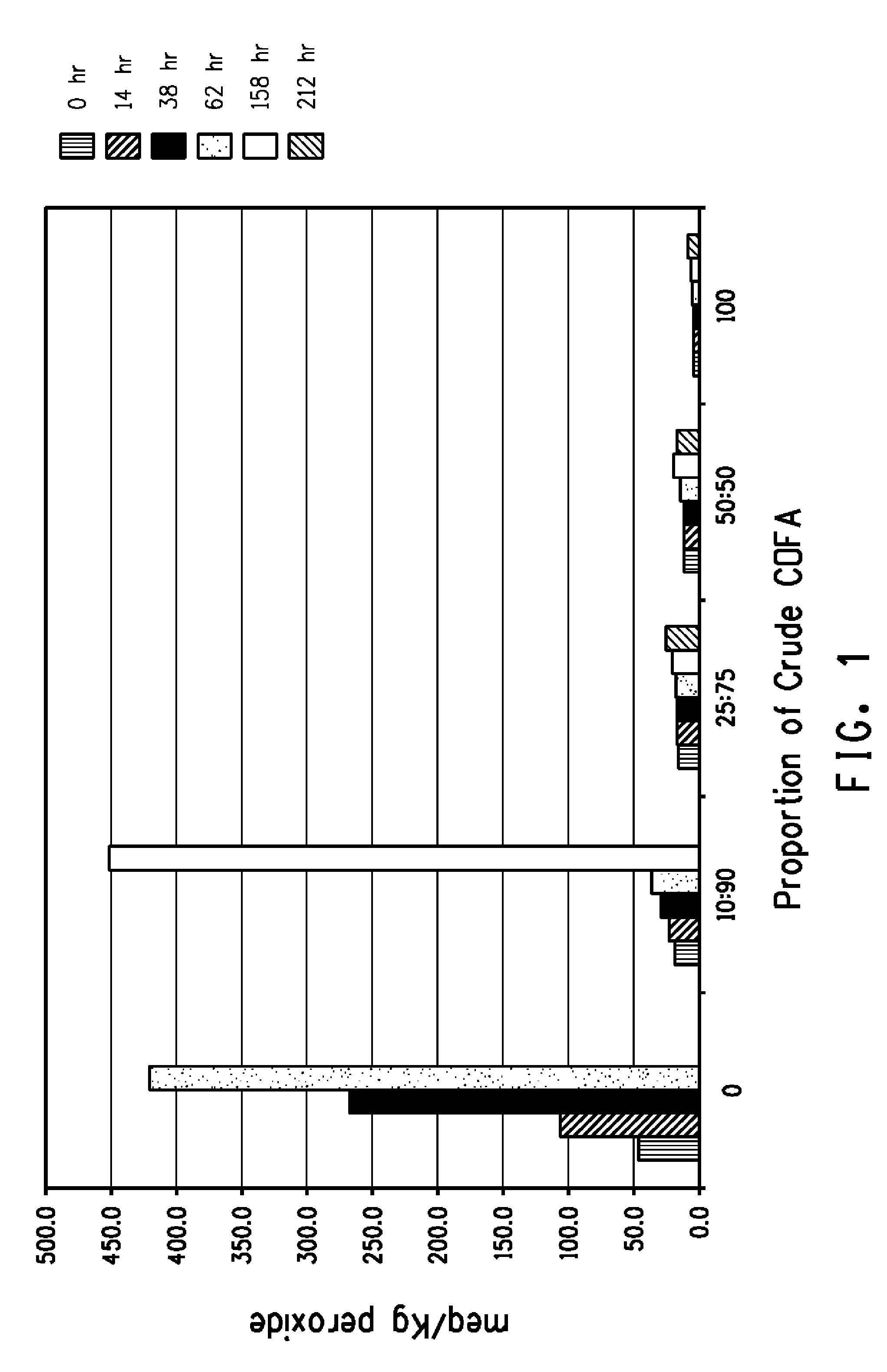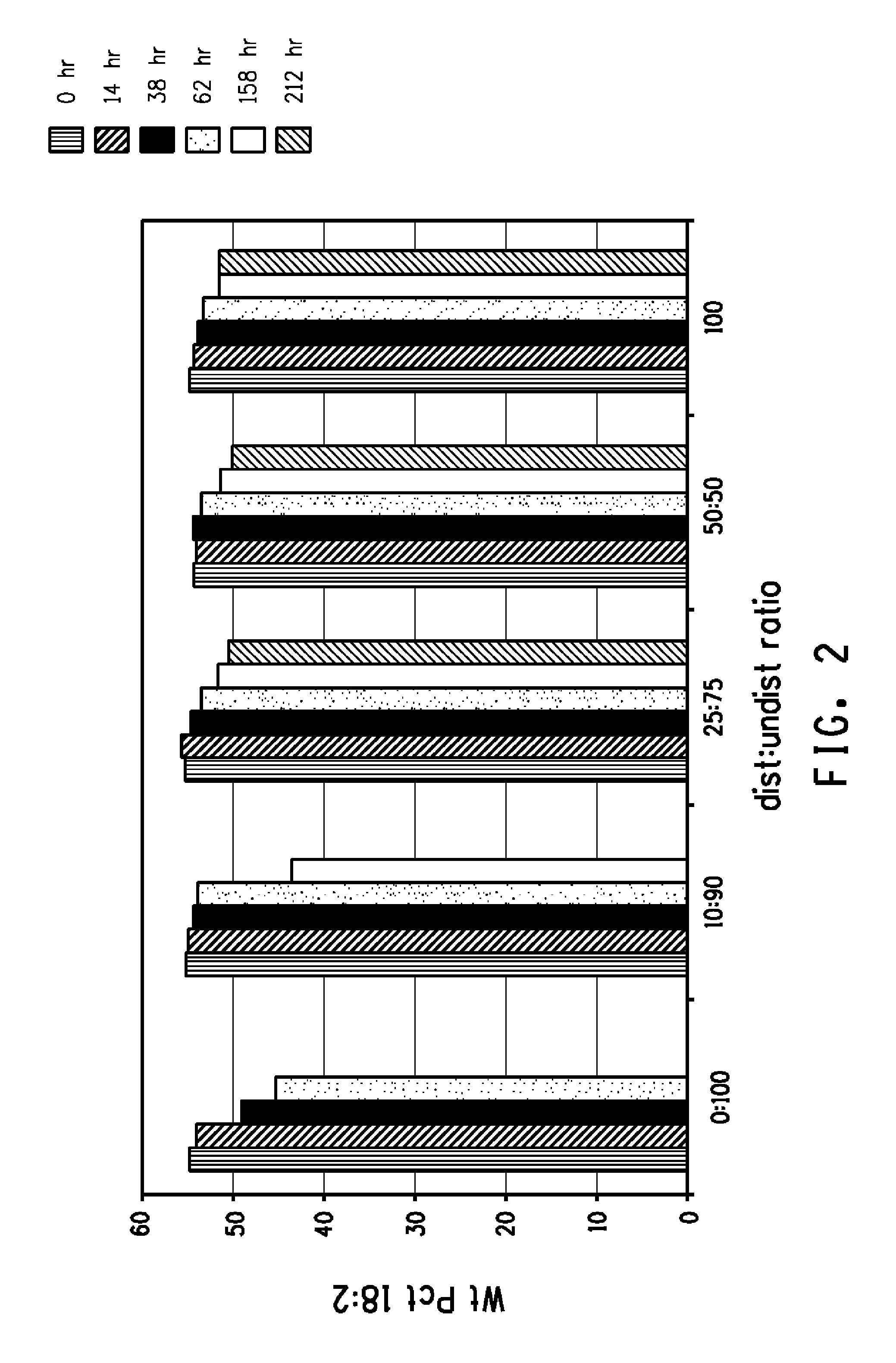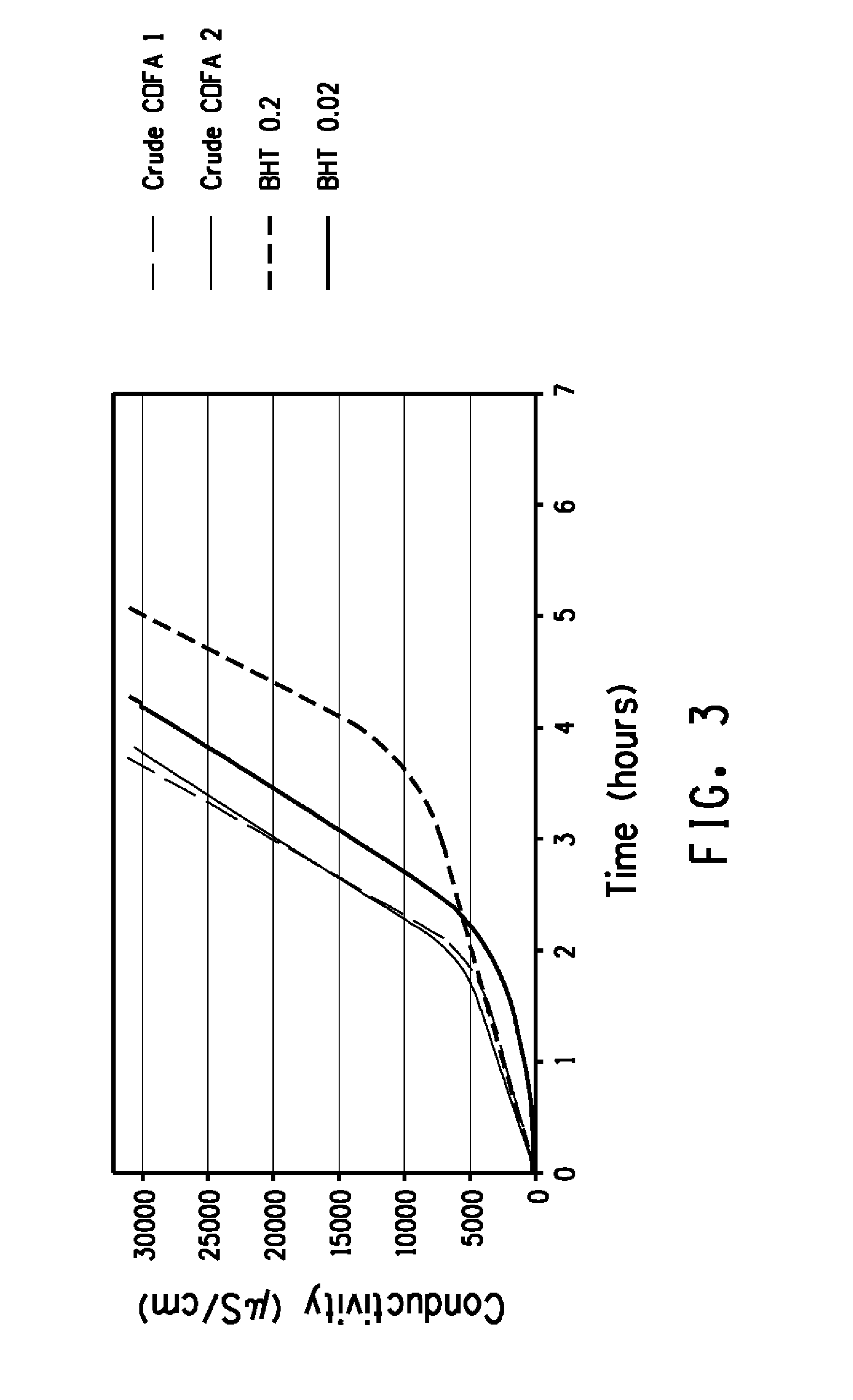Recyclable extractant compositions
a technology of extractant compositions and extractants, applied in the field of recyclable extractant compositions, can solve the problems of high risk of oxidation, and achieve the effect of effective level of antioxidants or antioxidant-like compounds
- Summary
- Abstract
- Description
- Claims
- Application Information
AI Technical Summary
Benefits of technology
Problems solved by technology
Method used
Image
Examples
example 1
Oxidation Levels of Mixtures of Distilled and Crude Corn Oil Fatty Acid (COFA)
[0248]To determine if crude COFA was capable of rescuing the antioxidant activity of distilled COFA, mixtures of crude and distilled COFA were made and exposed to oxygen for several days at 30° C. 100% crude COFA, 100% distilled COFA, 90% distilled / 10% crude COFA, 75% distilled / 25% crude COFA, and 50% distilled / 50% crude COFA samples were created and exposed to oxygen for several days through slow bubbling of air through neat oil. The peroxide content of the COFA was measured and the results are shown in FIG. 1.
[0249]The following samples were prepared from crude COFA prepared as outlined above and distilled COFA (Emery Oleochemicals; Cincinatti, Ohio)
TABLE 1Composition of samples of crude, distilled, and crude and distilled COFA.SampleWt Crude COFAWt distilled COFAA200B020C218D515E1010
[0250]The samples were put into a heating block held at 30° C. and had air bubbled through the liquid at a rate of 11 ml / m...
example 2
Effect of Oxidized COFA on an Isobutanologen
[0254]The negative effect of oxidized COFA was shown by the reduction on glucose uptake rate observed when a culture of an isobutanologen was exposed to a secondary liquid phase of oxidized COFA. The oxidized COFA was prepared ex situ by exposing distilled COFA (i.e., COFA without antioxidant capacity) to a stream of breathing air for a period of time such that the peroxide value increased from less than 10 to about 100 meq / kg. A portion of this material was further processed by heating under N2 atmosphere to about 80° C. and so the peroxide value was reduced to less than 10 meg / kg and the intermediary peroxides were converted to secondary oxidation products. These two materials are referred to as primary and secondary oxidized COFA. The culture of the isobutanologen with residual glucose present and negligible isobutanol or isobutanol side products was exposed to either primary or secondary oxidized COFA. The rate of glucose consumption o...
example 3
Effect of Range of Oxidized COFA on an Isobutanologen
Prophetic
[0255]In order to determine the effect of a range of COFA oxidation on glucose consumption rate and growth rate of the recombinant microorganism, the oxidized COFA is blended with virgin COFA (i.e., COFA with a peroxide value of less than 10 meq / kg) to give a COFA peroxide value or putative secondary oxidation product range of 10 to 100 meq / kg. The rate of glucose consumption of the isobutanologen in batch culture exposed to the COFA blends is observed over a 48 hour period.
PUM
| Property | Measurement | Unit |
|---|---|---|
| temperature | aaaaa | aaaaa |
| temperature | aaaaa | aaaaa |
| temperature | aaaaa | aaaaa |
Abstract
Description
Claims
Application Information
 Login to View More
Login to View More - R&D
- Intellectual Property
- Life Sciences
- Materials
- Tech Scout
- Unparalleled Data Quality
- Higher Quality Content
- 60% Fewer Hallucinations
Browse by: Latest US Patents, China's latest patents, Technical Efficacy Thesaurus, Application Domain, Technology Topic, Popular Technical Reports.
© 2025 PatSnap. All rights reserved.Legal|Privacy policy|Modern Slavery Act Transparency Statement|Sitemap|About US| Contact US: help@patsnap.com



